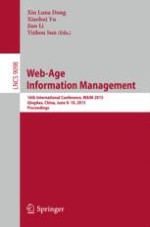2015 | OriginalPaper | Buchkapitel
Batch Mode Active Learning for Networked Data with Optimal Subset Selection
verfasst von : Haihui Xu, Pengpeng Zhao, Victor S. Sheng, Guanfeng Liu, Lei Zhao, Jian Wu, Zhiming Cui
Erschienen in: Web-Age Information Management
Aktivieren Sie unsere intelligente Suche, um passende Fachinhalte oder Patente zu finden.
Wählen Sie Textabschnitte aus um mit Künstlicher Intelligenz passenden Patente zu finden. powered by
Markieren Sie Textabschnitte, um KI-gestützt weitere passende Inhalte zu finden. powered by
Active learning has increasingly become an important paradigm for classification of networked data, where instances are connected with a set of links to form a network. In this paper, we propose a novel batch mode active learning method for networked data (BMALNeT). Our novel active learning method selects the best subset of instances from the unlabeled set based on the correlation matrix that we construct from the dedicated informativeness evaluation of each unlabeled instance. To evaluate the informativeness of each unlabeled instance accurately, we simultaneously exploit content information and the network structure to capture the uncertainty and representativeness of each instance and the disparity between any two instances. Compared with state-of-the-art methods, our experimental results on three real-world datasets demonstrate the effectiveness of our proposed method.
